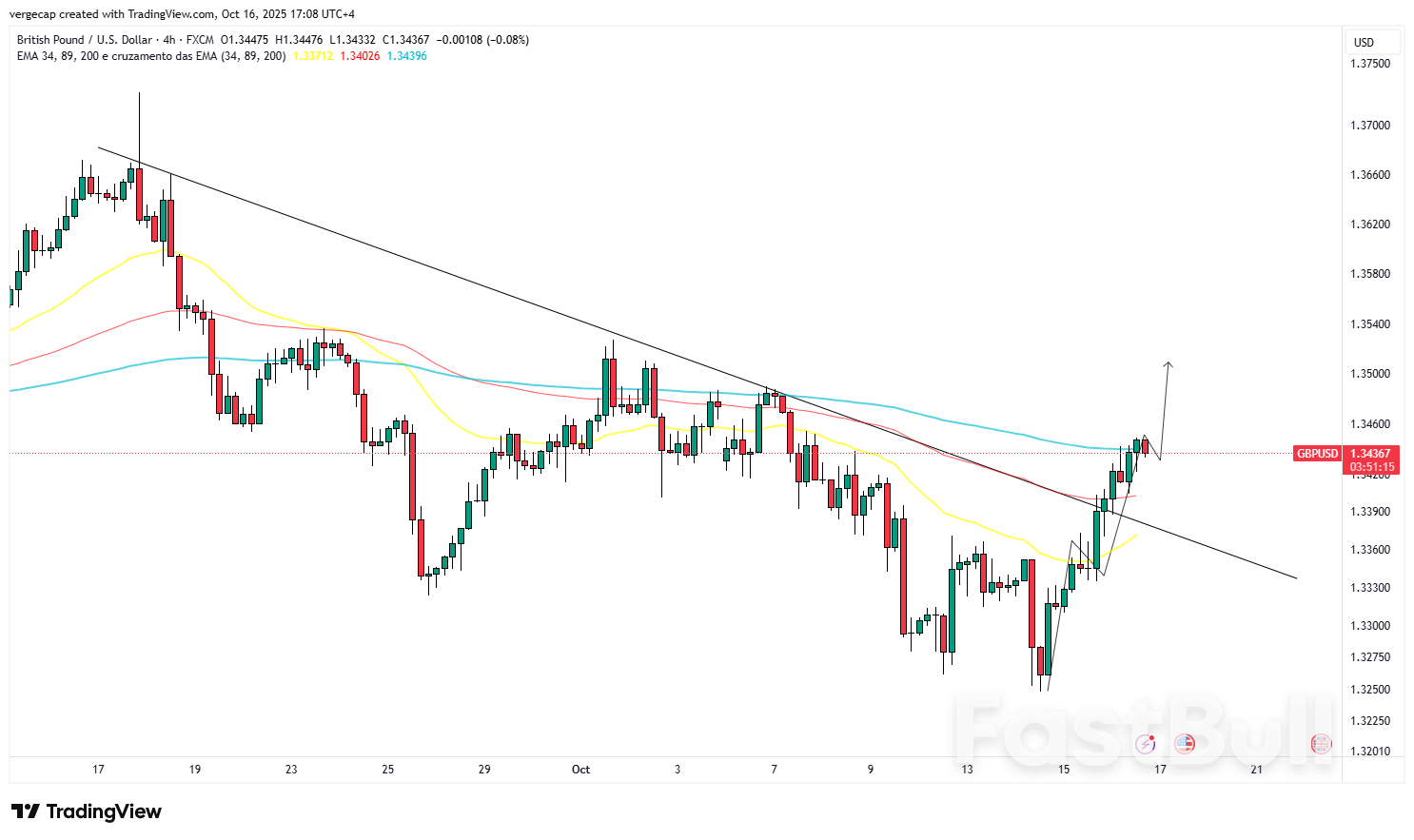The British Pound extended its advance against the U.S. Dollar on Wednesday, with the GBP/USD pair climbing near 1.3440 after the release of stronger-than-expected UK GDP data. The move marks another step in the Pound’s recent recovery, as investors rotate back into Sterling amid improving domestic fundamentals and a weakening Greenback weighed down by shifting Federal Reserve expectations and escalating trade tensions with China.
At the time of writing, the U.S. Dollar Index (DXY), which tracks the performance of the Greenback against a basket of six major currencies, trades near a fresh weekly low around 98.40. The decline in the DXY underscores a broader retreat in dollar demand, driven by a growing consensus that the Federal Reserve is nearing a more aggressive phase of monetary easing.
The Greenback has faced sustained selling pressure this week as traders ramp up bets that the Federal Reserve will deliver additional rate cuts before year-end. Recent economic indicators — including soft job growth and slowing wage gains — have added to concerns that the U.S. labor market may be losing steam, increasing the likelihood that policymakers will act decisively to cushion the economy from further weakness.
According to the CME FedWatch tool, markets are now pricing in a 94.6% probability that the Fed will lower rates by 50 basis points, bringing the target range down to 3.50%-3.75% before the end of 2025. This marks a sharp shift in sentiment from just a month ago, when investors expected the Fed to maintain a cautious stance amid mixed inflation data.
Adding to dovish sentiment, Federal Reserve Governor Michelle Bowman openly backed the case for further easing. “I continue to see two more cuts before the end of this year,” Bowman said on Tuesday, according to Reuters. Her remarks underscore a growing divide within the Federal Open Market Committee (FOMC), with several members now emphasizing the downside risks to employment over persistent inflationary pressures.
Investors have interpreted these comments as confirmation that the Fed’s next move will favor growth over price stability — a stance that historically tends to weaken the dollar and support risk-sensitive currencies like the Pound.
The Pound’s rally has also been underpinned by encouraging UK GDP data, which showed that the economy expanded modestly despite ongoing headwinds from high energy costs and global uncertainty. The data reinforced the view that Britain’s economy is holding up better than expected, providing the Bank of England with some breathing room even as it navigates its own path toward lower rates.
While the BoE has signaled it may ease policy later this year, markets remain confident that any UK rate cuts will lag behind those of the Fed, helping maintain the relative attractiveness of Sterling. Analysts note that as long as UK data remains resilient, the Pound is likely to continue outperforming the dollar in the near term.
“The UK’s better-than-feared GDP performance is giving Sterling a tailwind,” said one London-based strategist. “The narrative is shifting from recession concerns to relative resilience, and that’s a powerful backdrop when the dollar is under pressure.”
Beyond monetary policy, geopolitical developments have also played a significant role in dampening dollar sentiment. U.S.-China trade tensions resurfaced this week after President Donald Trump threatened to impose additional 100% tariffs on Chinese imports, reigniting fears of a renewed trade war between the world’s two largest economies.
In a move that further complicated global market dynamics, Trump also signaled his intention to pressure Beijing into halting purchases of Russian oil — a position that analysts say risks driving a deeper wedge between Washington and Beijing.
While the tariff measures are expected to take effect in early November, market participants are cautiously optimistic that tensions may ease following a planned meeting between Trump and Chinese President Xi Jinping later this month in South Korea. Nonetheless, the uncertainty surrounding trade policy continues to undermine confidence in the dollar as investors seek safer alternatives or currencies with stronger growth outlooks.
Technical Analysis 
From a technical perspective, the GBP/USD pair has extended its upward trajectory after clearing key resistance levels. The pair’s recent move above the 1.3400 threshold was reinforced by a breakout from its short-term bullish trendline and a decisive push beyond the 50-day exponential moving average (EMA50).
Momentum indicators, particularly the Relative Strength Index (RSI), have turned positive after cooling off from overbought conditions in prior sessions, suggesting that the latest upswing is supported by renewed buying interest rather than speculative positioning.
A sustained hold above 1.3400 could open the door for further gains toward 1.3470 and 1.3550 in the coming sessions. Consider buying on minor pullbacks toward the 1.3400 zone, with tight stops below 1.3370 to manage downside risk.
TRADE RECOMMENDATION
BUY GBPUSD
ENTRY PRICE: 1.3440
STOP LOSS: 1.3370
TAKE PROFIT: 1.3550













